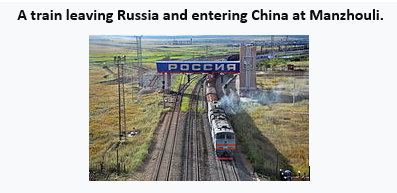Steel Products Prices North America

CRU on Russia’s Aluminum Export Plan B: China
Written by Greg Wittbecker
February 4, 2022
By Greg Wittbecker, Advisor, CRU Group
Given the fact that the standoff in Ukraine is ongoing, we thought it appropriate to stay on this theme of Russian aluminum supply and how the Russians try to overcome sanctions.
![]()
The Ties that Bind Us Together – Russia and China
Russia and China have a long association going back to Mao’s close ties to Moscow during his rise to power. Their political ideology forms a natural bond. Economic ties have also been longstanding. In 2020, Russia exported over $49 billion worth of goods to China, led by mineral fuels (natural gas crude petroleum, refined products at $29 billion), refined sawn wood ($3 billion), metallic ores ($2.5 billion) and refined copper ($1.80 billion).
Russia’s Gazprom expected to double its exports of natural gas to China in 2021, reaching 8.5 billion cubic meters (bcm) through its Power of Siberia pipeline. Gazprom has a 30-year supply agreement with China to supply up to 38 bcm.
In aluminum, UC Rusal has always had high aspirational goals of being a major supplier of primary aluminum to China.
In 2010, UC Rusal launched its IPO in Hong Kong, raising $2.2 billion. Aside from getting the capital infusion, Rusal also wanted to raise its profile in China.
In 2012, Rusal formed a joint venture with China SOE Norinco to market Russian aluminum into China. They dissolved the partnership in 2020 due to low volumes and have established a direct presence in Shanghai now…. their timing may have been fortuitous even before the concern over Western sanctions has emerged.
Chinese Aluminum Imports Soar in 2021
China imported 3.2 million tons of primary aluminum and products in 2021, rising from 2.7 million tons in 2021.
Imports of semi-fabricated and fabricated aluminum products have been a staple of Chinese trade flows for a long time. However, the massive rise in primary, virgin metal has been a rare development. The last time China imported on a scale like this was in 2009, when their economy was recovering at a much faster rate than the World ex China was shaking off the effects of the Global Financial Crisis. Fast forward to 2020-2021 and China again demonstrated a countercyclical economic performance versus the World ex China, struggling with COVID-19.
Decarbonization Targets Potentially Mean Imports as a Permanent Feature
A new element now versus 2009 is the Chinese vision to decarbonize its economy with a special focus on the energy-intensive sectors like aluminum. China has announced a 45-million-ton production cap on primary aluminum, and people are beginning to take the goal as serious.
While China is continuing to build new, low-carbon production in the hydro-rich provinces of Yunnan, Guizhou, and autonomous region of Guangxi…. new production plans have ground to a halt in the traditional coal-rich provinces of Inner Mongolia, Xinjiang, and Shandong.
China is concurrently investing in massive recycling projects. CRU estimates at least 8 million metric tons of new capacity coming in 2021-2023, tapping into a pool of domestically generated scrap coming from the first generation of autos, buildings and post-consumer products now reaching end of life.
However, scrap can’t fully “fund” aluminum growth in China, especially given the vagaries of when scrap comes to market. This pushes China into importing more primary aluminum to bridge the gap in total demand
Russia to the Rescue
UC Rusal’s long-held aspirations to ship its Siberian metal south into China may finally be realized. Sanctions on Russia may jumpstart that process. China needs imports and the Russians need a high-volume market that will pay them outside the global banking system (SWIFT) that won’t touch Russian goods. A natural match
Is the Supply-Chain Up to the Task?
The short answer is yes.
UC Rusal’s production leaves its smelters by rail and eventually ends up being exported by sea through either St. Peterburg (Baltic) or the Pacific ports of Vavino or Nahadka. About 75% of Russian metal is exported already, so it is a matter of re-directing it. Given that most of the Chinese aluminum consumption is along the Eastern Seaboard stretching all the way south to Guangdong Province, it would make sense to export the metal via vessel and bring it down in break bulk vessels.
Exports to China could conceivably also move directly into China via rail. China’s three rail crossings into Russia are all located along the eastern section of the border between the two countries

The crossings at Manzhouli and Suifenhe are at either ends of the Trans-Manchurian Railway, which was a shortcut for the Trans-Siberian Railway built through northeastern China in the early 1900s. Manzhouli, in northern Inner Mongolia, is China’s busiest inland port and handles the bulk of the bilateral freight trade.
Suifenhe, in southern Heilongjiang Province, borders the town of Pogranichny in Primorsky Krai of the Russian Far East. Freight trains from Harbin to Khabarovsk and Vladisvostok pass through Suifenhe. A third rail connection is located further south at Hunchun in eastern Jilin Province bordering Kraskino.
China’s Incentive to Play Along
President Xi has plenty of reasons to encourage this trade flow:
• It weakens the strength of the United States’ possible sanctions against Russia.
• It strengthens the ties between the world’s Communist Superpowers.
• It creates a high-volume source of low-carbon aluminum to protect Chinese semi-fabricated and fabricated goods from exclusion in the West due to high carbon intensity from domestic coal-based metal.
• It allows an accelerated closure process for domestic high-carbon capacity.
• And finally, China will get this metal at a very good price given its unique ability to pay for the goods when no one else can.
Greg Wittbecker joined CRU in January 2018 after retiring from Alcoa, where he was Vice President of Industry Analysis and Managing Director of Alcoa Beijing Trading, based in Shanghai, China. His career spans 35 years in the aluminum industry, having also held senior commercial and management roles at Cargill, Wise Metals and Koch Supply and Trading. Greg brings perspective on the entire aluminum supply chain from bauxite to aluminum finished products and will be a regular contributor to SMU going forward. He can be reached at gregory.wittbecker@crugroup.com
Request more information about this topic.
Learn more about CRU’s services at www.crugroup.com
Greg Wittbecker
Read more from Greg WittbeckerLatest in Steel Products Prices North America

SMU Price Ranges: Sheet and plate steady ahead of Independence Day
Sheet and plate prices were little changed in the shortened week ahead of Independence Day, according to SMU’s latest check of the market.

Nucor maintains plate prices, opens August order book
Nucor aims to keep plate prices flat again with the opening of its August order book.

Nucor CSP remains level at $900/ton
Nucor maintained its weekly list price for hot-rolled (HR) coil this week, following two consecutive increases.

Cliffs raises prices, seeks $950/ton for July spot HR
Cleveland-Cliffs plans to increase prices for hot-rolled (HR) coil to $950 per short ton (st) with the opening of its July spot order book. The Cleveland-based steelmaker said the price hike was effective immediately in a letter to customers dated Monday.

HRC vs. prime scrap spread widens in June
The price spread between HRC and prime scrap widened in June.
